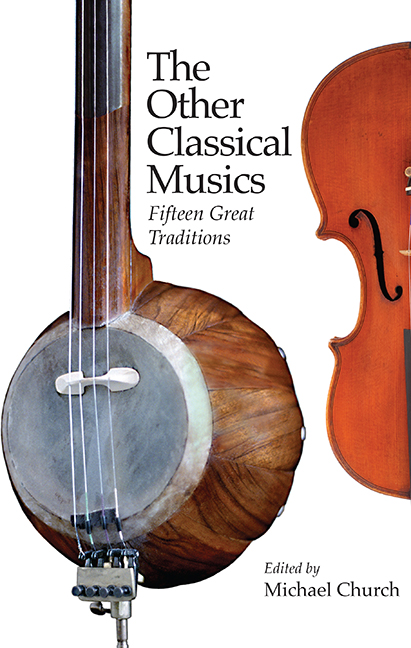Book contents
- Frontmatter
- Dedication
- Contents
- List of Illustrations
- List of Contributors
- Preface and Acknowledgements
- Introduction
- Maps
- 1 Thailand, Laos, Cambodia, Vietnam
- 2 Java
- 3 Japan
- 4 China: The Guqin Zither
- 5 Chinese Opera
- 6 North India
- 7 South India
- 8 Mande Jaliyaa
- 9 North American Jazz
- 10 Europe
- 11 North Africa and the Eastern Mediterranean: Andalusian Music
- 12 The Eastern Arab World
- 13 Turkey
- 14 Iran
- 15 Uzbekistan and Tajikistan
- Notes
- Bibliographies
- Index
11 - North Africa and the Eastern Mediterranean: Andalusian Music
Published online by Cambridge University Press: 29 May 2021
- Frontmatter
- Dedication
- Contents
- List of Illustrations
- List of Contributors
- Preface and Acknowledgements
- Introduction
- Maps
- 1 Thailand, Laos, Cambodia, Vietnam
- 2 Java
- 3 Japan
- 4 China: The Guqin Zither
- 5 Chinese Opera
- 6 North India
- 7 South India
- 8 Mande Jaliyaa
- 9 North American Jazz
- 10 Europe
- 11 North Africa and the Eastern Mediterranean: Andalusian Music
- 12 The Eastern Arab World
- 13 Turkey
- 14 Iran
- 15 Uzbekistan and Tajikistan
- Notes
- Bibliographies
- Index
Summary
A dozen men are seated in a semicircle, identically dressed in long-sleeved, loose-fitting white robes, red fez hats with black tassels and pointed, openheeled slippers of yellow leather. Some have violins or violas balanced vertically on their knees, others have lutes; one plays a goblet drum resting on his left thigh, another a tambourine; the lead singer has no instrument. They begin with an instrumental prelude with no discernible rhythm, seeming to feel their way forward through the melody. When the drum enters, the orchestra seizes the steady beat and launches into a substantial overture. The musicians are all playing the same melody, but ornamenting it in slightly different ways, giving a rich, complex texture. After this introduction they become a chorus as well as an orchestra, with the players singing in unison; the leader sings along and occasionally leaps up an octave or a fifth so that his voice pierces through the choral and instrumental background. They perform a sequence of songs, each with a similar structure, all in the same rhythm and melodic mode so that they fit together almost seamlessly. Suddenly there is a break for a solo improvisation on different instruments, after which the leader sings a highly ornamented solo, climbing so high that his voice seems in danger of cracking with the strain. The group then launches into another series of songs, the rhythm getting gradually faster, with the final one ending amid applause and ululations from the audience.
THE scene described would be typical of a performance in Morocco, but similar music can be heard in many other parts of the Arab world: from Sufi Brotherhoods where musicians and listeners sit cross-legged on the floor, to the Cairo Opera House where male musicians wear black-tie and tuxedos and the women floor-length, brightly coloured gowns, to gatherings of Sephardic Jews in Israel where the same melodies are sung to Hebrew lyrics. In modern times this tradition is most often referred to as ‘Andalusian Music’ – that is, the music that originated in medieval Muslim (or ‘Moorish’) Spain, known as al-Andalus in Arabic.
- Type
- Chapter
- Information
- The Other Classical MusicsFifteen Great Traditions, pp. 246 - 269Publisher: Boydell & BrewerPrint publication year: 2015

